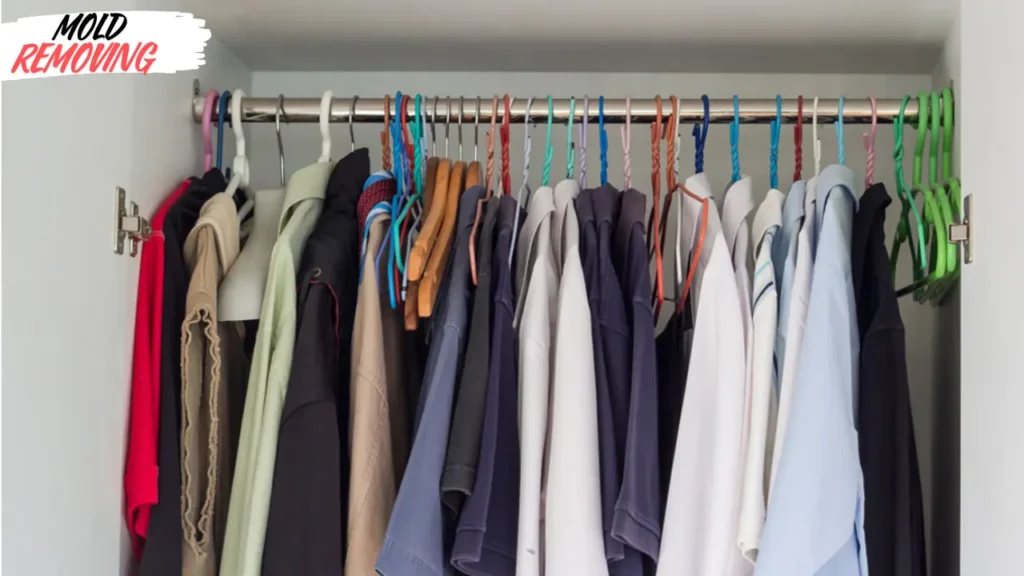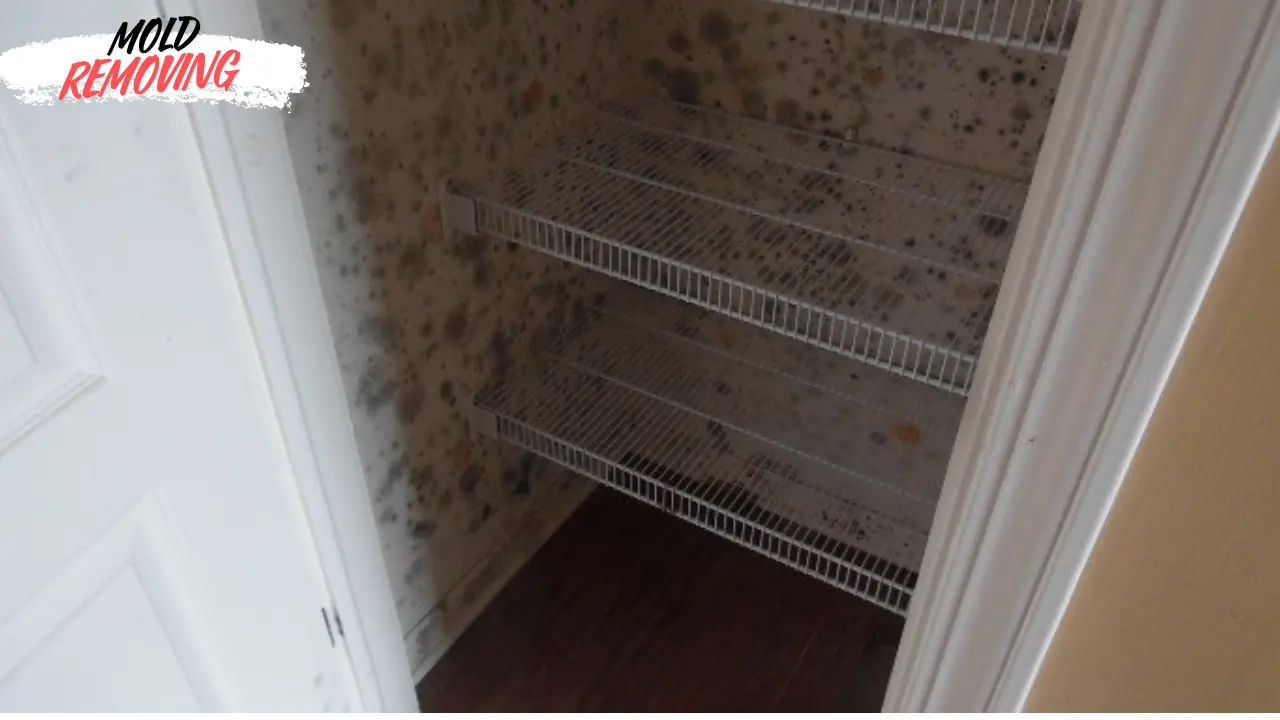Mold thrives in damp and poorly ventilated areas, making closets susceptible to infestation, especially if they are dark and rarely accessed. Mold spores can easily spread through the air, settling on surfaces and growing rapidly under the right conditions.
Therefore, addressing mold growth in closets promptly is crucial to prevent further damage and health risks.
Mold in Closets
- Signs of Mold Growth
The presence of mold in closets is often indicated by visible patches of black, green, or white fuzzy growth on walls, ceilings, or stored items. Musty odors emanating from the closet can also be a sign of mold infestation.
- Common Causes
Mold in closets can be caused by various factors, including poor ventilation, high humidity levels, water leaks, or dampness due to lack of airflow. Cluttered and overcrowded closets are also more prone to mold growth as air circulation is restricted.
Preparation for Mold Removal
Before tackling mold removal, it’s essential to gather the necessary supplies, including protective gear such as gloves, goggles, and a mask to prevent exposure to mold spores. Additionally, ensure proper ventilation by opening windows or using fans during the cleaning process.
Methods for Mold Removal
- Dry Brushing and Vacuuming
Start by dry brushing the mold-infested surfaces to remove loose spores and debris. Use a vacuum cleaner with a HEPA filter to carefully suction any remaining mold spores from the closet surfaces and items.
- Using Mold Removal Products
There are various commercial mold removal products available, such as bleach-based cleaners or mold remediation sprays. Follow the given instructions carefully when using these products and ensure ventilation during application.
- Natural Remedies for Mold Removal
Alternatively, you can opt for natural remedies such as vinegar, baking soda, or hydrogen peroxide solutions to remove mold from closet surfaces. These eco-friendly options are effective in killing mold spores without harsh chemicals.
Deep Cleaning the Closet
- Removing and Cleaning Affected Items
Take out all items from the closet and inspect them for mold growth. Clean any affected items thoroughly with appropriate cleaning solutions or discard heavily contaminated items that cannot be salvaged.
- Cleaning the Closet Surfaces Thoroughly
Wipe down the closet walls, shelves, and floors with a mixture of water and detergent or a specialized mold cleaner. Pay close attention to corners, crevices, and hidden areas where mold spores may lurk.

Preventing Mold Growth in the Future
- Proper Ventilation and Air Circulation
Ensure adequate ventilation in the closet by installing vents or using a dehumidifier to maintain optimal humidity levels. Keep closet doors open periodically to allow air circulation and prevent moisture buildup.
- Keeping the Closet Dry and Moisture-Free
Address any sources of moisture or water leaks promptly to prevent mold growth. Repair leaking pipes, roof leaks, or faulty HVAC systems, and use moisture-absorbing materials like silica gel or desiccants to keep the closet dry.
- Regular Inspection and Maintenance
Make it a habit to inspect your closet regularly for signs of mold or moisture buildup. Clean and declutter the closet periodically to minimize the risk of mold growth and maintain a healthy living environment.
Conclusion
Removing mold from your closet requires diligence, patience, and proper safety precautions. By identifying mold early, preparing adequately, and using effective removal methods, you can safeguard your belongings and promote a mold-free living space. Remember to prioritize prevention measures to mitigate the risk of future mold infestations.
FAQs
- How can I prevent mold from coming back in my closet?
- Regularly inspect your closet for signs of moisture or mold growth and address any issues promptly. Ensure proper ventilation and keep the closet dry and clutter-free.
- Are natural remedies effective for mold removal in closets?
- Yes, natural remedies such as vinegar, baking soda, and hydrogen peroxide can be effective in killing mold spores and preventing their regrowth.
- Can I use bleach to remove mold from my closet?
- While bleach is effective in killing mold, it can be harsh and may damage certain surfaces. It’s essential to use it cautiously and follow safety guidelines.
- What should I do if I discover extensive mold growth in my closet?
- If the mold infestation is severe or covers a large area, it’s advisable to seek professional mold remediation services to ensure thorough removal and prevent further spread.
- Is it safe to clean mold from my closet myself?
- With proper safety precautions, such as wearing protective gear and ensuring adequate ventilation, cleaning mold from your closet can be done safely. However, if you have underlying health issues or allergies, it’s best to consult a professional.


